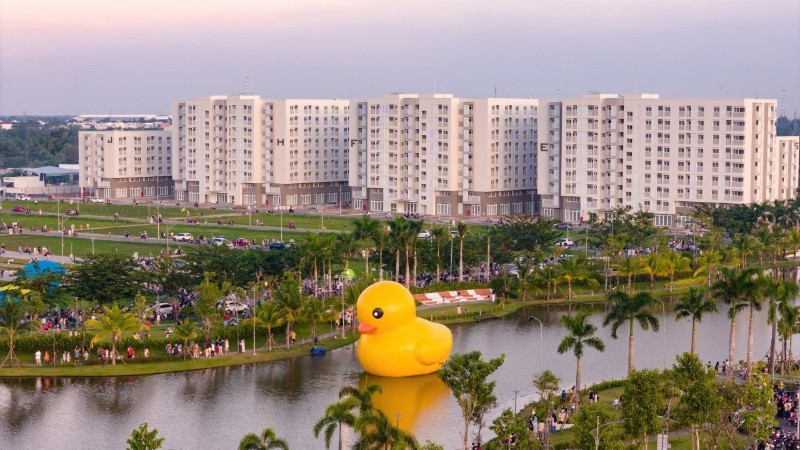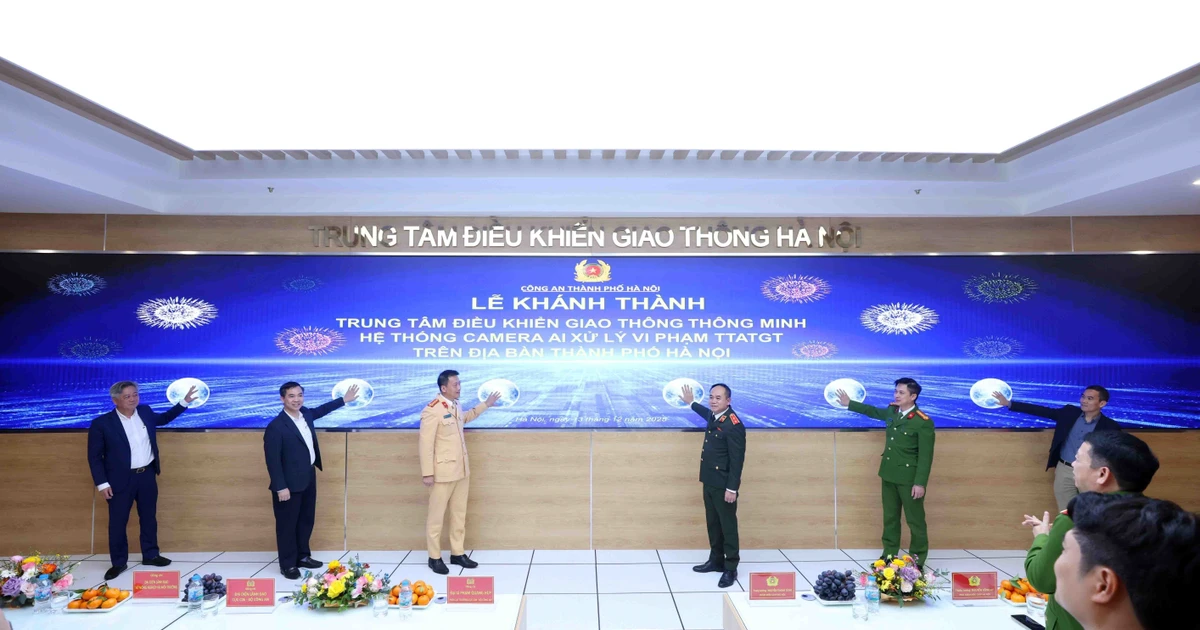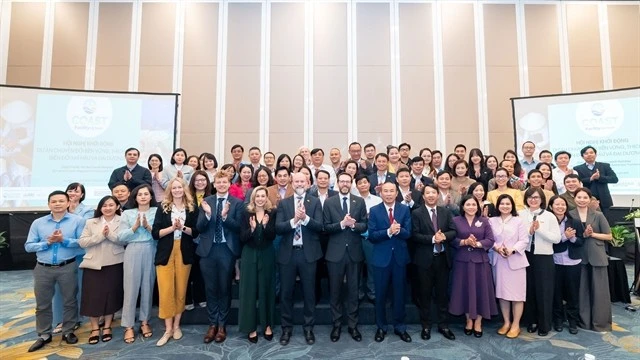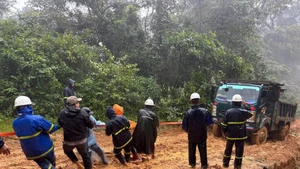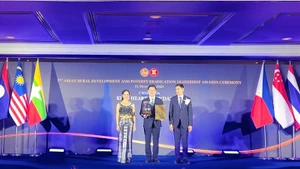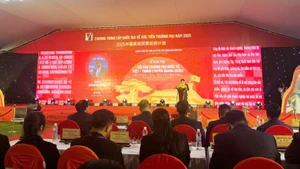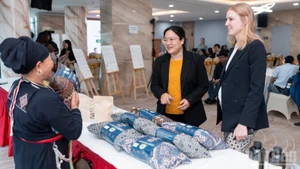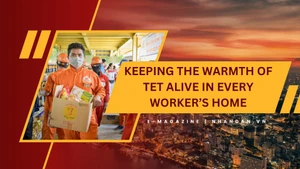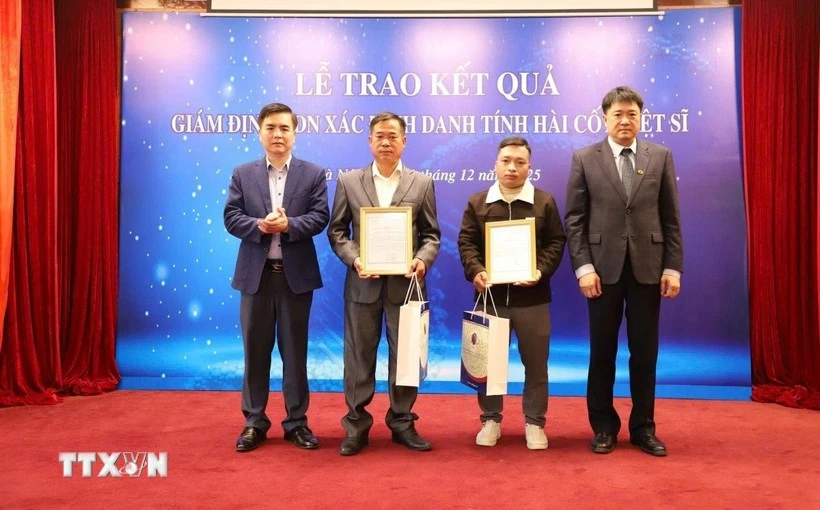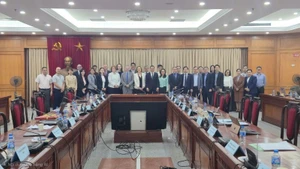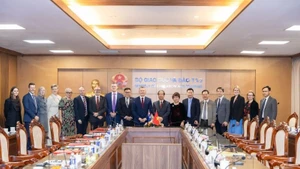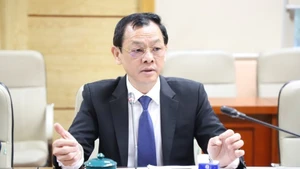Social housing - Humanitarian policy, strategic vision
Implementing the Party and State's directive on ensuring social security, especially the policy of "housing for low-income people, workers, and employees", in recent years, the development of social housing has made significant progress.
According to a report from the Ministry of Construction, by the end of the third quarter of 2025, there were 696 social housing projects with 637,048 units under construction. Of which, 165 projects have been completed (116,342 units), 151 projects were under construction (132,616 units), and 380 projects were approved for investment (388,090 units). Thus, the national progress had reached 60% of the target set by the Project for 1 million social housing apartments by 2030.
Chairing a meeting on social housing earlier in October, Prime Minister Pham Minh Chinh stressed: “Developing social housing is a major policy that shows the profound humanity of the Party and the State. This is not only about housing; it is the foundation of social stability, helping people settle down in order to build their livelihoods.”
The Prime Minister underlined the need to increase supply, reduce investment costs, control sales prices, and ensure that employees and low-income people can truly access suitable housing.
Construction Minister Tran Hong Minh said: “The target of 1 million apartments is necessary but still low compared to actual demand. In Ha Noi alone, every year there are hundreds of thousands of workers and graduates who need accommodation. Without a long-term programme of 14–15 million apartments, it will be very difficult to meet the demand”. He emphasised the need for a comprehensive policy on land funds, capital sources, incentive mechanisms and planning to link urban development with social housing.
Two bright spots: Can Tho and Hue – where policy comes to life
In Can Tho, the city was assigned a target of completing 16,900 social housing units by 2030. It has launched 10 projects, three of which were completed and seven were under construction. In the 2021–2025 period, the city expected to complete 3,649 units, reaching 77% of the plan.
A standout project is the Nam Long 2 social housing apartment complex, with a total investment of 1,253 billion VND and a scale of 1,601 apartments, sold at 15.8 million VND per square metres. The project completed 930 units, and 671 units remain under development.
Visiting the project, Prime Minister Pham Minh Chinh praised the efforts of the investor and local authorities: “Whatever is built is sold, proving demand is very large. What matters is good quality and synchronised, well-planned infrastructure — there should be no difference between social and commercial housing.”
The Prime Minister also asked the city to continue allocating land funds and creating favourable mechanisms for capable enterprises like Nam Long to keep developing social housing, together with social facilities in health, education, culture, and sports.
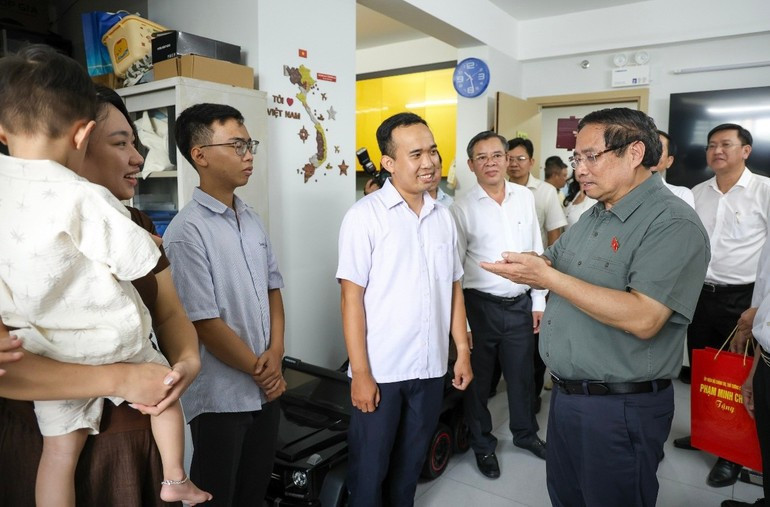
According to the investor of Nam Long, its social housing is developed under the EHomeS brand, standardised with the 3S criteria (Saving, Smart, Social). The brand is well known for its social value, tied to the need to “settle down to build a career” and serving the majority of Vietnamese people.
The Nam Long 2 social housing blocks are adjacent to the central amenity cluster of the Nam Long II Central Lake Complex (the commercial name of the Nam Long 2 project). Residents enjoy a full ecosystem of urban-scale amenities such as a central lake park and an entertainment sports area with a swimming pool.
In addition, with a sustainable development orientation, the complex regularly organises community programmes to improve local quality of life, such as outdoor cinemas and seasonal festivals, notably the “Giant Moon” event during the recent Mid-Autumn Festival.
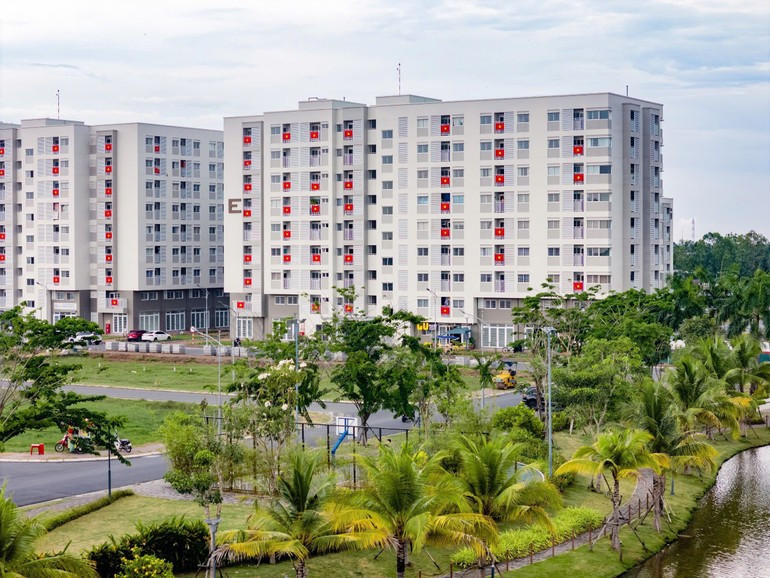
In Hue, the social housing area in Zone E – An Van Duong New Urban Area has been announced with a total investment of nearly 2,074 billion VND in an area of 38,081 square metres, with a scale of 1,975 apartments (25–70 m² each). This project was considered a clear, methodical, and transparent step by the local authorities in implementing social security goals.
Earlier, Prime Minister Pham Minh Chinh visited the Thuy Van Complex, Phase 2, where 364 high-rise apartments were completed, 359 more were under construction, and 391 low-rise units were planned. The Prime Minister appreciated Hue’s “approach with planning, infrastructure, and people”, and requested replication of this model.
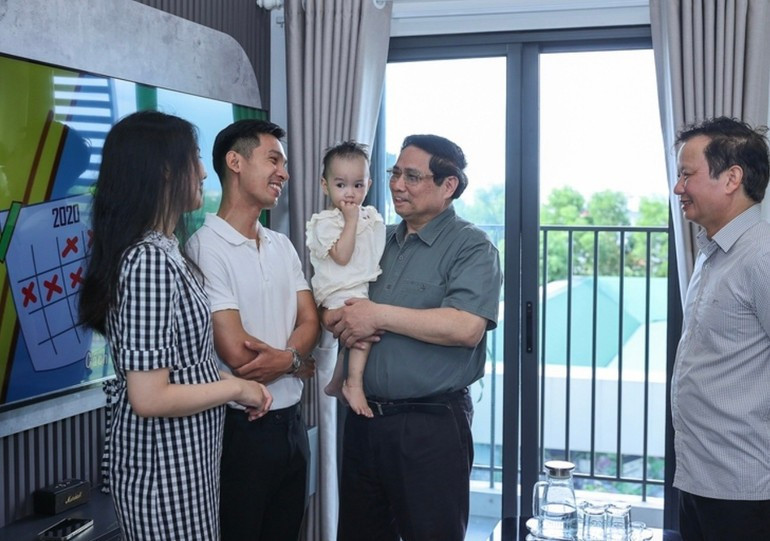
“Social housing cannot be built in leftover or remote areas. It must be built in areas with convenient transport, schools, and hospitals—places where people can truly live and develop,” the Prime Minister emphasised.
Recommendations from reality to remove difficulties and promote social housing
From implementation in reality, many localities and businesses shared difficulties that need prompt solutions to speed up social housing projects. A major challenge was the lengthy process for investment policy approval and construction licensing, delaying ground-breaking. Moreover, although the land fund for social housing was sufficient in quantity, many sites were far from city centres with unsynchronised and incomplete technical and social infrastructure, making daily life less convenient. Project development businesses also faced difficulties in credit capital and were constrained by profit mechanisms, reducing investment appeal in this segment.
In response, the Ministry of Construction proposed that the Government complete soon relevant policies, including a Decree on the National Housing Fund and amending Decree 100/2015/ND-CP. It also recommended prioritising credit flows for social housing and encouraging capable, experienced enterprises to participate in large-scale projects, contributing to realising the goals of sustainable social security.
Happiness for people and hopes of the younger generation
In newly completed social housing areas in Hue and Can Tho, the bright smiles of residents on handover day became simple but moving images. They were the clearest “measure” of policy success, as each new house was lit with trust and hope.
Tran Van Dung, a worker in an industrial park in Can Tho, shared emotionally: “We used to rent, and the rent took almost all of our salary. Now we have a social housing apartment — despite being small, it’s ours. The joy is hard to describe. We still hope for preferential bank interest rates.”
In Hue, Nguyen Minh Duc, a young engineer who recently married, expressed: “We only need a small house to start life. A price of about 16–17 million VND per square metre is suitable; with preferential loans, more young people like us could buy a house.”
These stories show that the policy reached real lives. Each apartment is not only a place to live, but also a foundation for workers to settle down, build their careers, and nurture the future.
According to forecasts by the Ministry of Construction, demand for social housing is expected to continue surging in the coming period, especially in major cities such as Ha Noi, Ho Chi Minh City, Da Nang, Can Tho, and Binh Duong, where many young workers, engineers, and newly graduated civil servants choose to settle and build long-term careers. They need not only a place to live but also a stable, civilised living environment connected to the community.
Therefore, the social housing development programme is not only about immediate accommodation; it is an investment in the nation’s future, creating a foundation for the young generation to feel secure in their commitment and contribution to the development of their homeland and the country.
The smiles seen today in Hue and Can Tho will spread to many other places, where each new house strengthens confidence in the leadership of the Party, the attention of the State, and the aspiration to build a compassionate and prosperous Viet Nam where no one is left behind.
Government's determination - speeding up for social security goals
In meetings on social housing development, Prime Minister Pham Minh Chinh repeatedly emphasised: this is not only an economic task, but also a political responsibility and a vivid expression of humane social security policy towards the people and for the people.
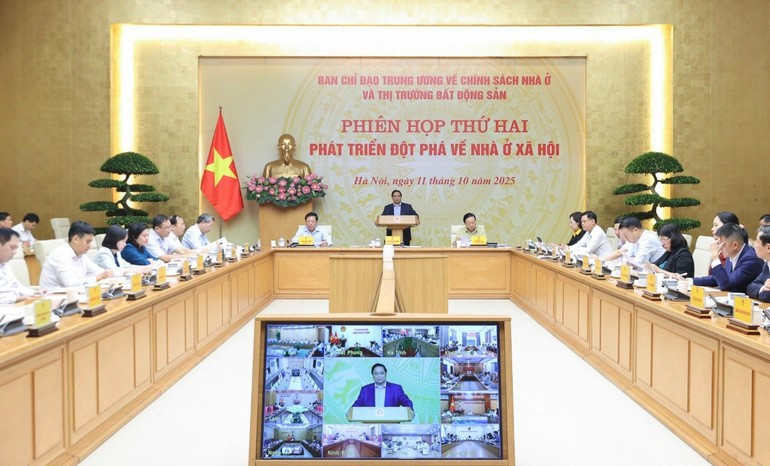
The Prime Minister requested the Ministry of Construction, ministries, sectors, and localities to accelerate progress on social housing projects, striving to complete more than 84,000 units in 2025, about 84% of the plan. This was accompanied by the spirit of “not letting institutional bottlenecks hinder action”, learning by doing, and expanding scale steadily and effectively with perseverance and flexibility.
The Prime Minister also asked that it be necessary to review planning, allocate land funds reasonably, and ensure synchronised, convenient technical and social infrastructure for residents. At the same time, market information should be made more transparent to prevent speculation and price inflation, protecting the legitimate rights of people with real housing needs.
“Only when people have stable houses can they build their livelihoods. Social housing is not only a physical shelter but also the foundation of fairness, stability, and sustainable development,” the Prime Minister affirmed.
This spirit was clearly reflected in each locality and project. With the principle “people at the centre, enterprises as the driving force, and the State as the development creativity”, the models in Hue and Can Tho vividly show that when policy follows the right track and authorities walk alongside enterprises and people, social security truly spreads and takes root in daily life.
From Hue to Can Tho — two prominent highlights on the social housing map — further contribute to growing confidence and motivation for the whole country to move forward. Social housing is not just a construction project but also a project of trust, compassion, and the aspiration for a prosperous and humane Viet Nam where no one is left behind.
